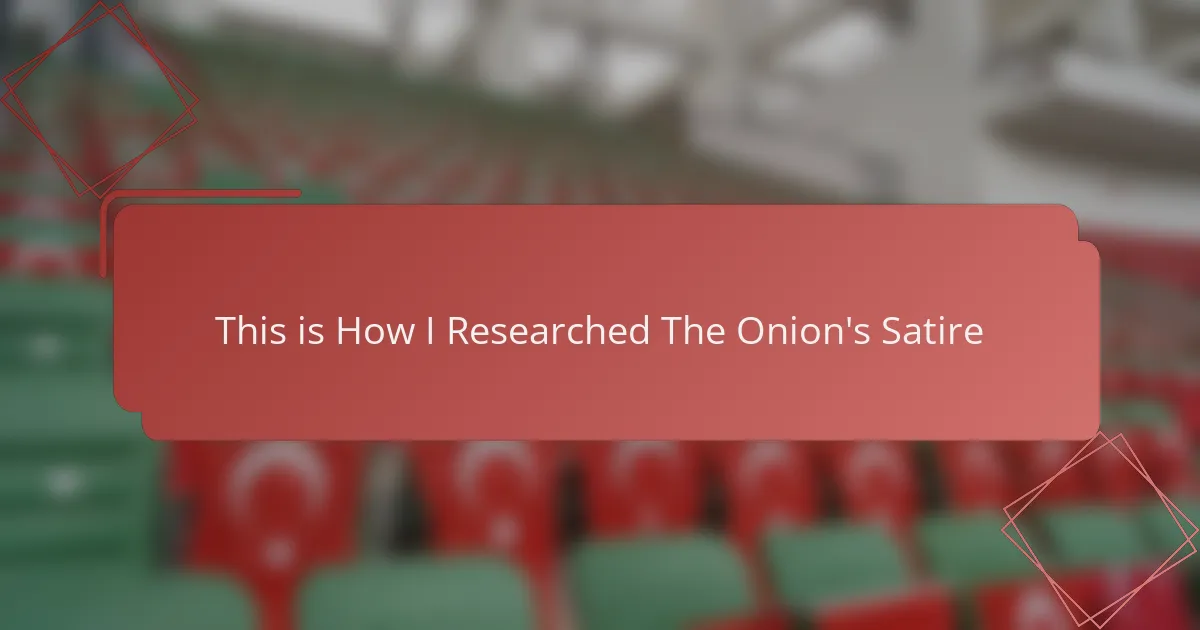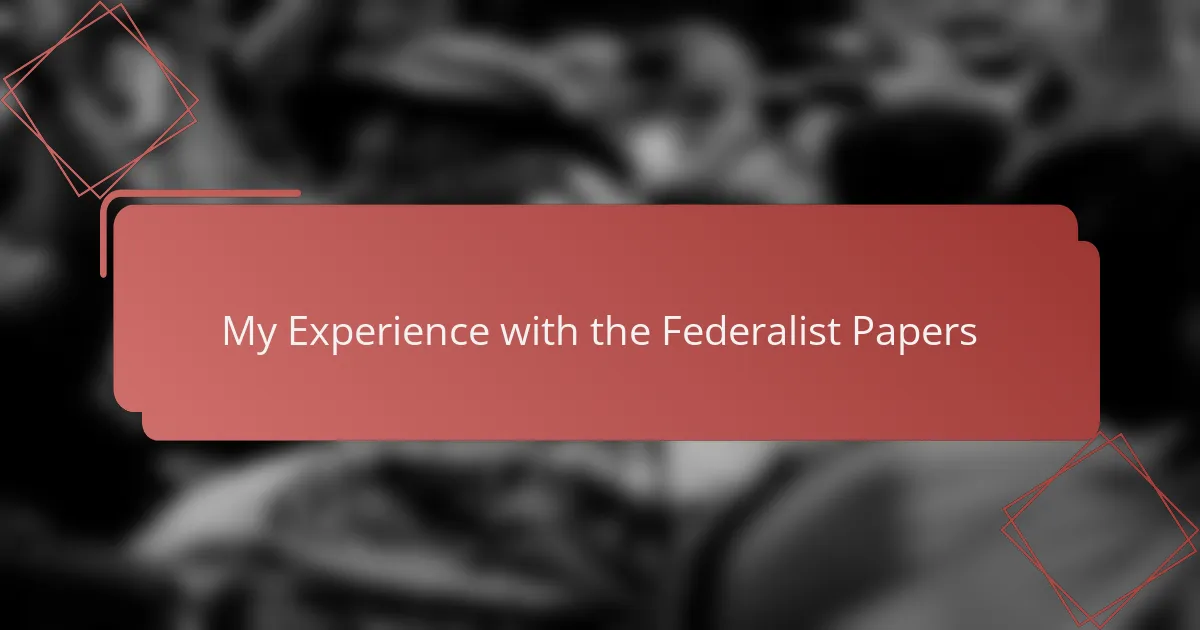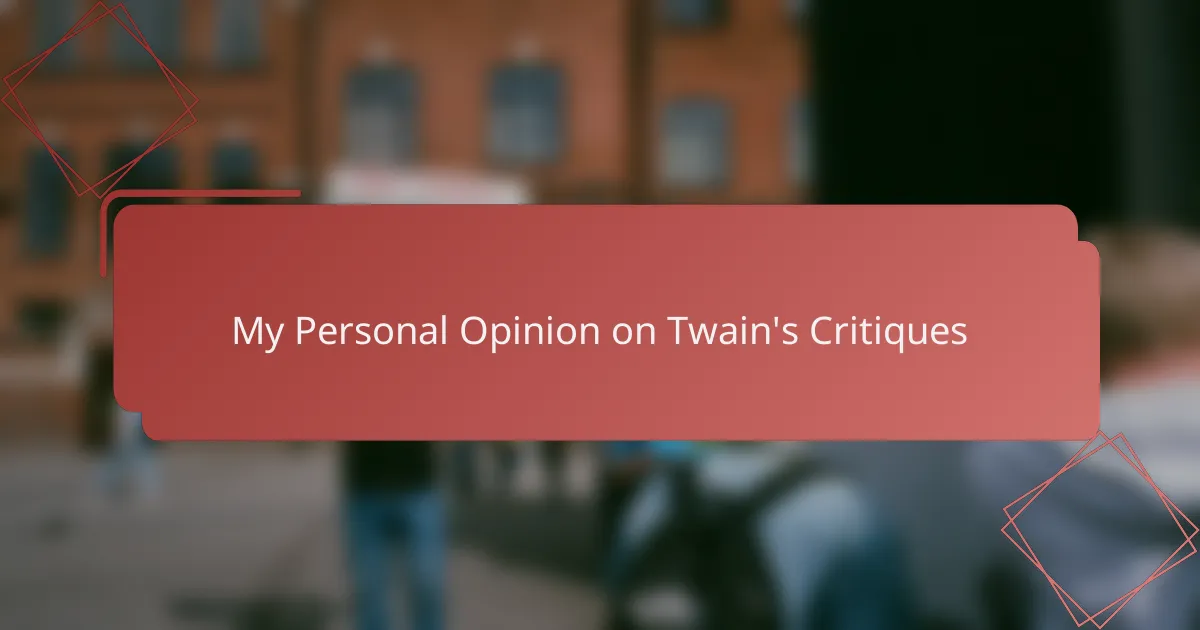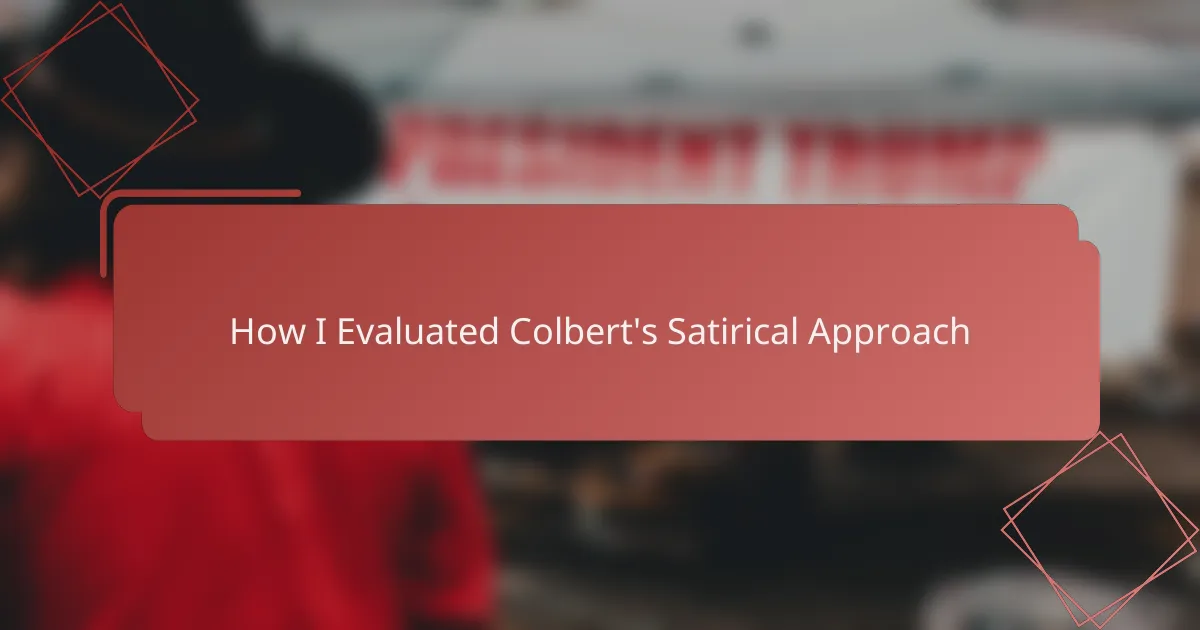Key takeaways
- Political satire serves as a powerful tool to entertain and provoke thought, often relying on irony and exaggeration to highlight societal flaws.
- The Onion’s unique style blends absurdity with traditional news formats, enhancing the impact of its political critiques.
- Effective satire analysis requires understanding the political context, audience reactions, and the deeper implications behind the humor.
- Researching satire reveals the importance of exaggeration and emotional engagement, allowing for a richer understanding of the underlying truths being conveyed.
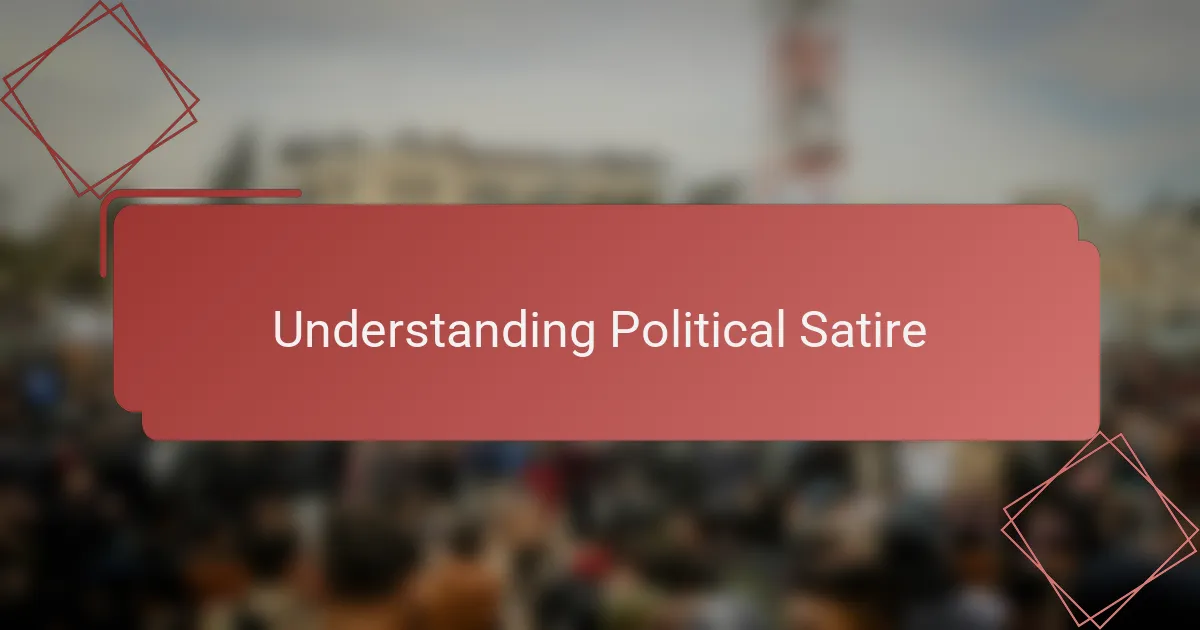
Understanding Political Satire
Political satire, to me, feels like a clever mirror held up to society’s quirks and flaws, especially in politics. Have you ever laughed at a joke that made you think twice about a politician’s speech? That mix of humor and critique is exactly what political satire does—it entertains while it enlightens.
When I dive into political satire, I notice it often relies on irony and exaggeration to expose truths that might otherwise be ignored. It’s like peeling back layers; the humor draws you in, but the message lingers long after. Don’t you find that some satirical pieces are sharper than straightforward news reporting?
What intrigues me most is how political satire invites reflection without preaching. It challenges us to question authority and societal norms through wit, making the experience both engaging and thought-provoking. Isn’t it fascinating how a simple parody can spark complex conversations?
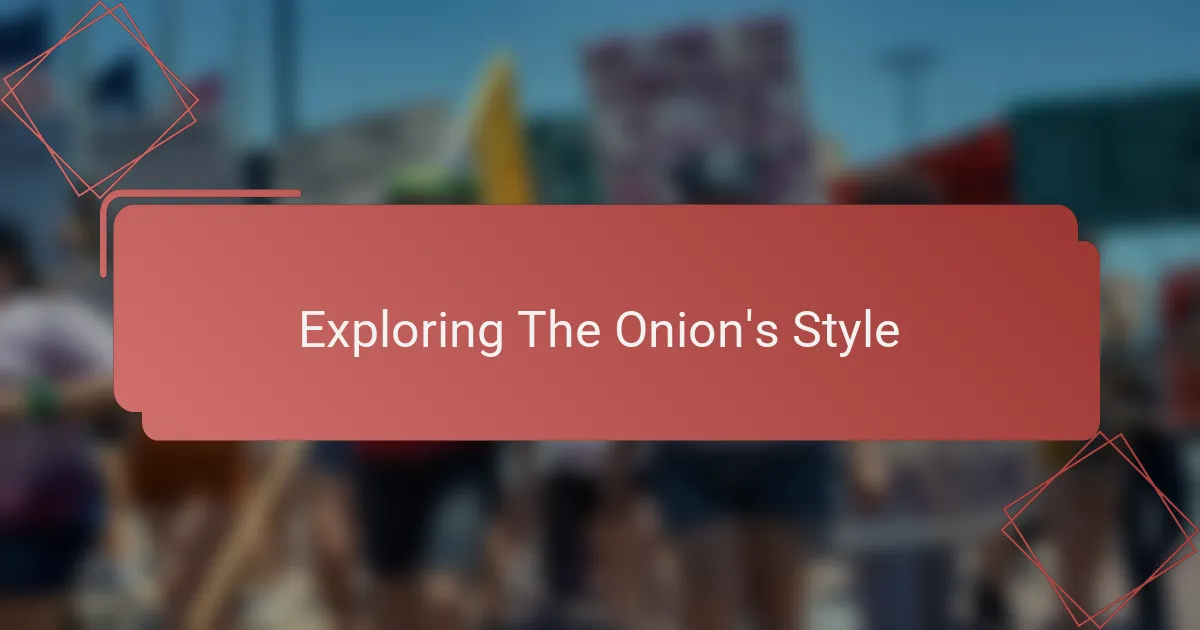
Exploring The Onion’s Style
Exploring The Onion’s Style involves diving into their unique blend of absurdity and sharp political commentary. From my experience analyzing their articles, what stands out is how they mimic traditional news formats while twisting reality to expose underlying truths. This method creates a powerful, often humorous reflection on current events that makes the satire both entertaining and thought-provoking.
| Characteristic | The Onion’s Approach |
|---|---|
| Format | Traditional news layout with headlines, bylines, and quotes to enhance realism |
| Tone | Deadpan and serious, despite absurd or exaggerated content |
| Content | Political, social, and cultural issues presented with irony and exaggeration |
| Purpose | To critique and highlight societal issues through humor and parody |
| Audience Engagement | Relies on readers’ awareness of real-world events to understand the satire |
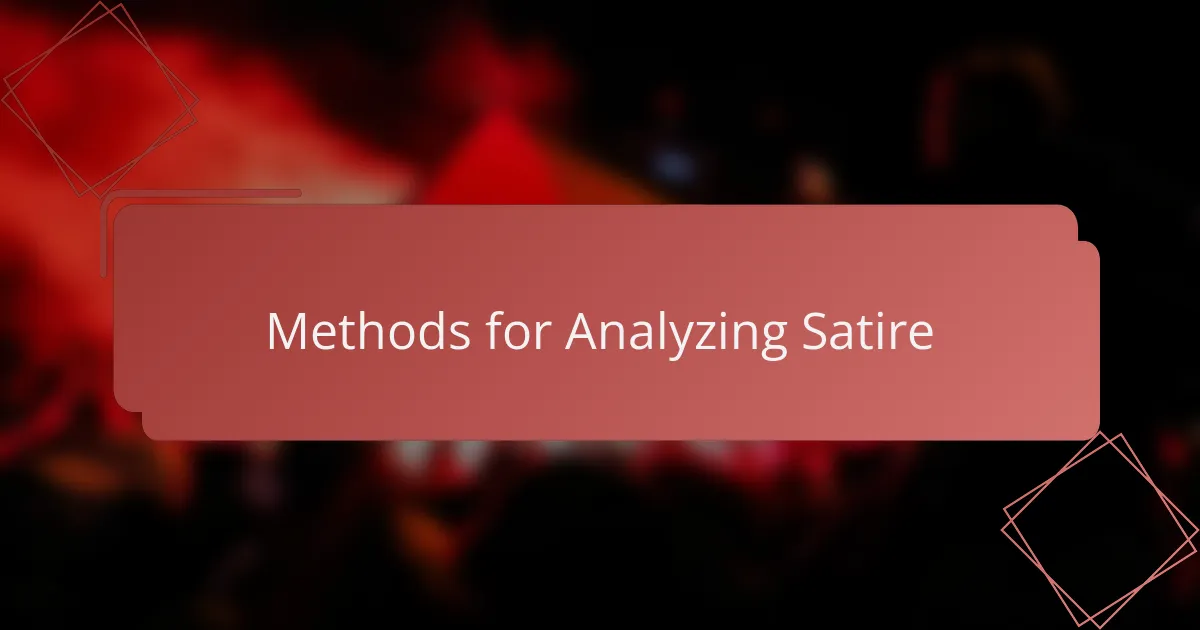
Methods for Analyzing Satire
When I first approached analyzing satire like that featured on The Onion, I realized that understanding the layers beneath the humor is essential. It’s more than just catching the joke; it’s about grasping the political context and the nuanced critique embedded in the absurdity. From my experience, stepping back and considering the broader social implications helped me connect the satire to real-world issues more deeply.
To break it down systematically, I used several methods that proved effective:
- Contextual Analysis: Investigating the political climate or event the satire is responding to.
- Tone and Style Examination: Noticing how irony, exaggeration, and parody create the satirical effect.
- Audience Reaction Study: Observing how different groups interpret the satire, revealing its impact and possible misunderstandings.
- Comparative Reading: Looking at similar satire pieces to identify patterns and unique approaches.
- Authorial Intent Research: Exploring interviews or statements from satirists to reflect on their purpose and perspective.
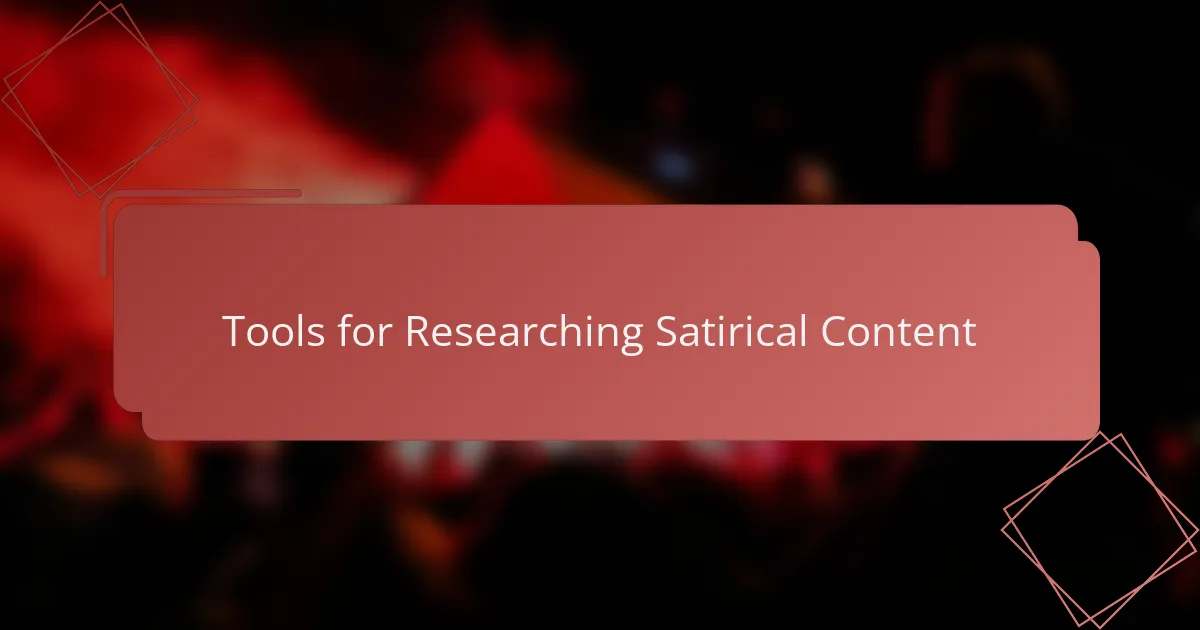
Tools for Researching Satirical Content
Researching satirical content like The Onion requires a mix of traditional investigative tools and a keen sense of humor to decode layers of irony. When I first dove into their articles, I realized that understanding the cultural and political context was just as crucial as fact-checking the statements within the satire itself.
One time, I used Google Trends to track the emergence of certain keywords after The Onion published a piece. It was fascinating to see public reactions shift, which gave me deeper insight into how satire influences and reflects public opinion.
Here are some essential tools I used to explore satirical content effectively:
– Fact-checking websites (to verify claims behind the satire)
– News archives (to trace real events that are being parodied)
– Social media analytics tools (to gauge audience reception and engagement)
– Cultural and political databases (to understand the context)
– Humor theory resources (to analyze satire techniques)
– Google Trends (to track public interest around satirical topics)
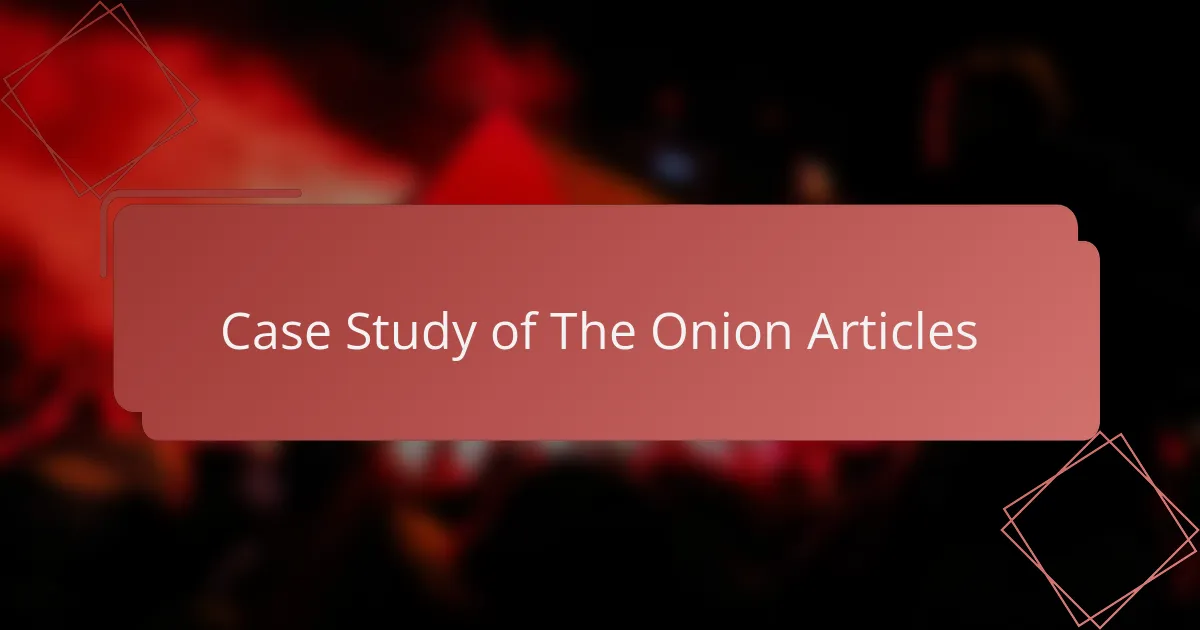
Case Study of The Onion Articles
Diving into specific articles from The Onion revealed to me how deftly they balance absurdity with sharp political critique. One piece that stuck in my mind exaggerated a mundane bureaucracy into a world-ending disaster, yet underneath, it spoke volumes about government inefficiency. Isn’t it amazing how they use such outlandish scenarios to expose very real frustrations?
I noticed that many of The Onion’s articles rely heavily on deadpan delivery—serious headlines paired with ludicrous content. This contrast made me pause and think: why does this format hit so hard? From my experience, it’s because the straight-faced tone forces readers to wrestle with the truth behind the humor instead of dismissing it as mere comedy.
Another fascinating aspect I uncovered was how The Onion’s use of conventional news tropes—like quotes, statistics, or eyewitness accounts—creates a familiar frame that disarms readers before delivering its punchline. This technique not only heightens the humor but also sharpens the critique, proving that satire can be as sophisticated as it is entertaining. Have you noticed how these familiar cues prime us to accept the ridiculous as plausible, if only for a moment?
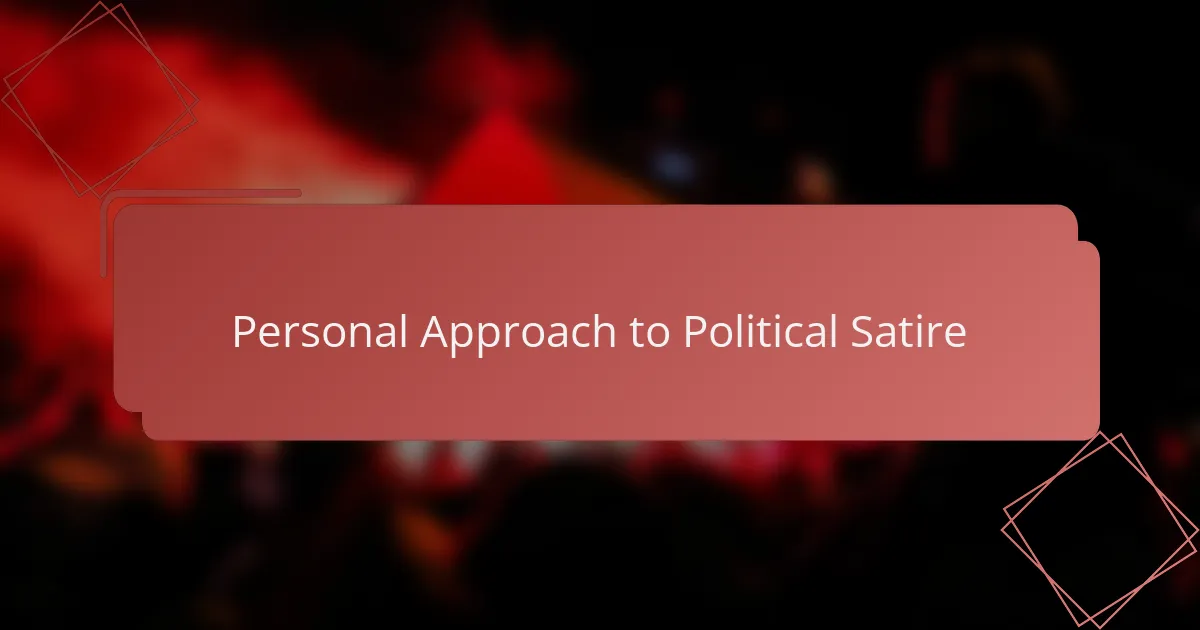
Personal Approach to Political Satire
When diving into political satire, I realized that my reaction was as important as the satire itself. I found myself laughing, pausing, and sometimes feeling a bit unsettled—those moments revealed the layers beneath the humor. It’s fascinating how satire can trigger such a mix of emotions, making the political critique more impactful.
Through this process, I developed a personal checklist to evaluate political satire effectively:
– Identify the core political message behind the humor
– Observe my emotional response to gauge the satire’s resonance
– Research the historical and political context to deepen understanding
– Analyze the use of irony, exaggeration, and parody techniques
– Compare different satirical works to see varying perspectives and styles
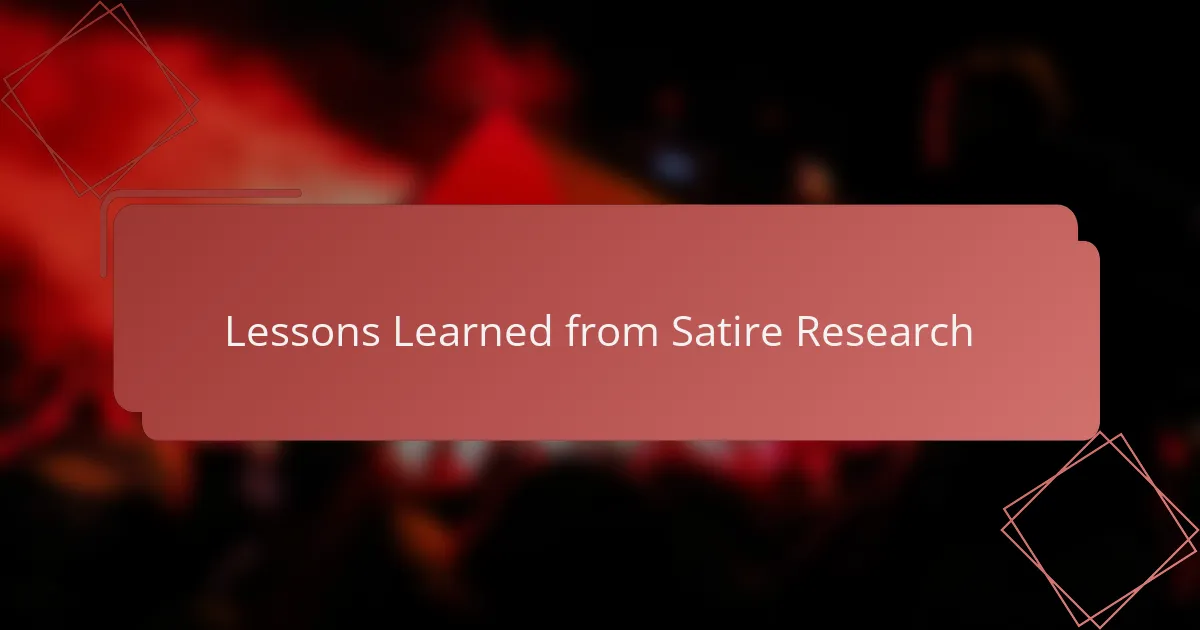
Lessons Learned from Satire Research
Satire research, especially on platforms like The Onion, taught me the importance of context. I realized that understanding the political climate at the time a satire was published is crucial to grasp its full meaning and impact. Without this background, satire can feel either confusing or superficial.
Another lesson was the power of exaggeration paired with subtle truth. I saw how The Onion walks a fine line between humor and serious critique, which makes their satire resonate deeply and provoke thought rather than just laughter. From my experience, the emotional punch of satire often comes from this blend.
| Aspect | Insight from Research |
|---|---|
| Context | Understanding political events around the satire’s release enhances interpretation |
| Exaggeration | Amplifies real issues to highlight absurdity without losing credibility |
| Emotional Impact | Combines humor with truth to engage and provoke reflection |
